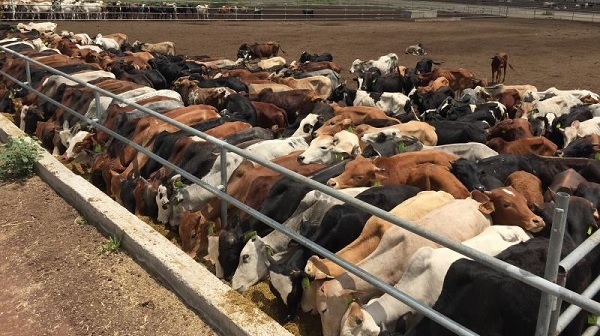
BY EPHREM ANDARGACHEW
Livestock production is an essential component of agriculture that can support the livelihoods and food security of large numbers of people in developing countries. The sector has been playing a substantial role in income generation, food, and nutrition security, draught power, and source of manure for about 85 percent of rural populations who depend largely on livestock and crop production systems in Ethiopia.
Various yearly Reports show that about 15 to 17 percent of the gross domestic product (GDP) and 37 to 87 percent of household incomes are contributed by the overall livestock sector. Hence, the livestock sector needs forages that are organic to animals.
Forages are essential for the successful operation of animal production. This is more relevant to ruminants which are heavily dependent upon forages for their health and production in a cost-effective and sustainable manner.
Forages are an economical source of nutrients for animal production. They also help conserve soil integrity, water supply, and air quality. Although the role of these forages for animal production could vary depending upon the regional preferences for the animal and forage species, climate, and resources, their importance in the success of ruminant production is acknowledged.
However, with the increasing global human population and expansion of urbanization, the sustainability of forage-based animal production systems is sometimes questioned due to the interrelationship between animal production and the environment.
According to the 2018 CSA (Central Statistical Agency) Agricultural Sample Survey: Volume II Report on Livestock and Livestock Characteristics (Private Peasant Holdings), stated that Ethiopia has a large livestock population, with an estimated 60.39 million cattle, 31.3 million sheep, 32.74 million goats, 11.32 million equines, and 1.42 million camels.
Despite the large number and importance of these animals, their productivity is low due to a number of factors such as inefficient management, poor infrastructure, poor marketing, and credit facilities, feed shortages both in quality and quantity, and health constraints. Among these, a shortage of feed was identified as one of the primary constraints in livestock production. One of the recommended profitable options to address this challenge is improved forage production using strategies suitable for a given farming system.
Taking these facts and recommendations into consideration, the Ethiopian Ministry of Agriculture has designed various mechanizes to address the shortages of fodders. The ministry currently is giving practical training to farmers to curb the shortage of animal forage across the country.
The Ministry has given practical training on planting and utilization of animal forage for farmers. Because the shortage of animal forage is causing high costs on livestock and livestock products in a country. This problem can be reduced if strong emphasis is given to cultivating improved livestock forage species besides crops and other agricultural products.
Ethiopian Ministry of Agriculture Resources Development Director Alemu Welde said that as part of the solution, the Ministry has started practical training on planting and utilization of animal forage for farmers. The training in forage cultivation has been given to 60 selected woredas in 5 regions: Amhara, Oromia, SNNP, Sidama, and Southwest Ethiopia.
At present, livestock and crop production have been affected negatively by the increasing population, and animal grazing areas. Besides, the nutrition content is decreasing from time to time. As a result, training farmers to increase improved forage is imperative to satisfy the increased population and get the expected products from livestock.
Furthermore, the training has been given by professionals who have already taken the program at the federal level for selected model farmers. Likewise, those model farmers who have participated in the training will give the training to other neighbor farmers, so as to address the training to many areas of the country, he said.
According to Alemu, the forage species selected for the training have the potential to produce high yields on a small land scale and can quickly be converted into milk and flesh, which can be planted in yards, fences, and other small places.
Minister of Agriculture Omar Hussein once explained that training is important to provide knowledge-based support, monitor and supervision of tasks, and understand the main activities and goals of work.
Training related to agriculture will help to ensure food and nutrition security, especially by narrowing the supply and demand gap in the country. It also replaces imported agricultural products with domestic production and ensures national food sovereignty as well as increases the supply and value of industrial inputs and increases foreign exchange earnings and increases competitiveness.
Indeed, the participant of farmers in the training supports utilizing improved forage which helps them to produce better milk and livestock production and use it as a source of income by selling.
THE ETHIOPIAN HERALD WEDNESDAY 13 JULY 2022





